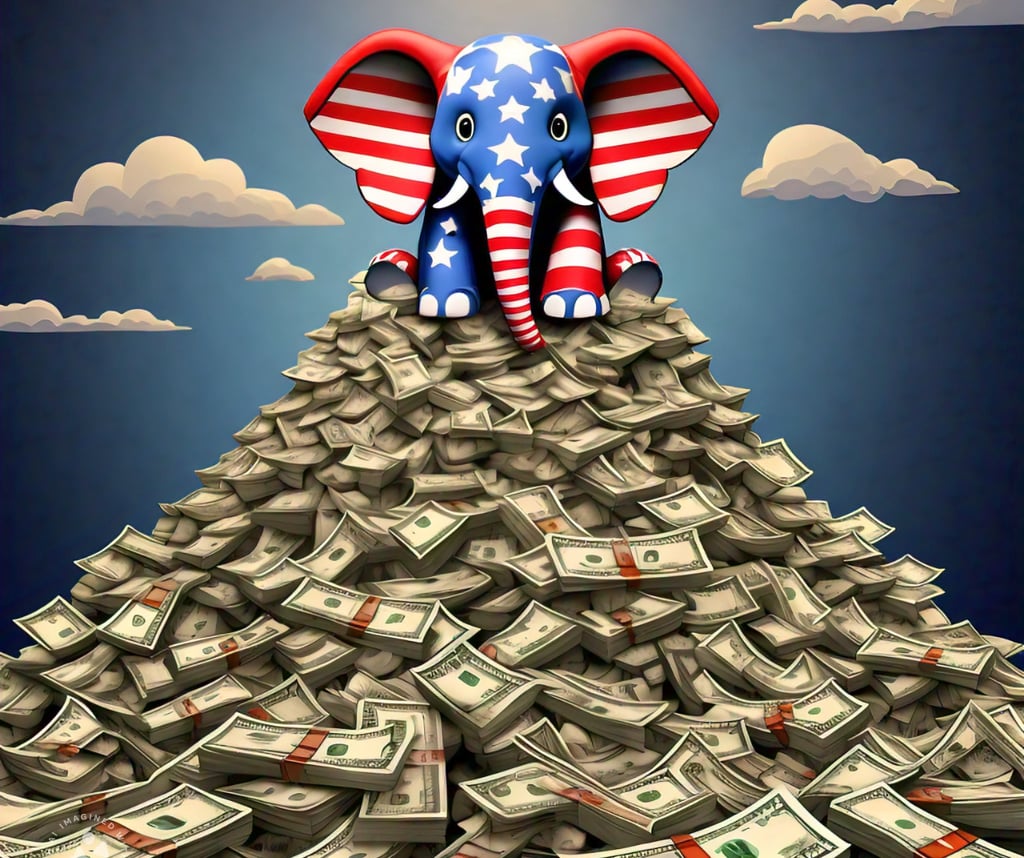US National Debt Now $35 Trillion - Taking a Closer Look Shows Republicans are mostly the Blame for it.
Democrats are cleaning up the Republican's Economic Messes


Introduction
This week, the national debt of the United States surpassed a staggering $35 trillion. Frequently, charts and discussions depict the national debt according to presidential terms, attributing the rise solely to the sitting president. However, an in-depth analysis reveals a more intricate story. Factors such as the state of the economy inherited from predecessors, economic crises, and policy decisions also play significant roles in shaping the national debt trajectory.
The Legacy of a Balanced Budget
During the 1990s, President Bill Clinton successfully managed to present the last balanced budget the United States has seen. Clinton's fiscal policies and economic conditions helped create a surplus and a robust economy. When the Republican administration of George W. Bush took over in 2000, they inherited an economy running smoothly with surplus funds. However, the subsequent years saw significant budgetary changes, tax cuts, and increased spending, particularly on defense, leading to rising deficits.
The Aftermath of Economic Crises
The end of Bush's tenure was marred by the 2008 financial crash, one of the worst economic downturns since the Great Depression. This crisis was a pivotal factor that forced the Obama administration to implement extensive stimulus spending to revive the economy. Consequently, the national debt continued to climb as the government sought to mitigate the impacts of the recession and reduce unemployment rates. Fast forward to 2016, President Donald Trump inherited an economy recuperating steadily under Obama’s administration with declining unemployment rates.
Fiscal Policies and Pandemic Pressures
During Trump's four-year term, the national debt ceiling was raised three times under a Republican-majority government, reflecting increased governmental spending and tax-saving policies. The advent of the COVID-19 pandemic in 2020 altered economic dynamics drastically, resulting in unprecedented spending to support public health and economic stability. When President Joe Biden assumed office in early 2021, he faced the dual challenge of managing a pandemic-stricken economy and addressing the existing national debt.
Beyond Presidential Tenures: A Broader Perspective
While it is common to attribute the national debt increase to specific presidential terms, it is crucial to consider the broader economic context. Each president inherits varying economic conditions that significantly influence fiscal policies and debt levels. Ultimately, the national debt should be viewed through a lens that considers these economic inheritances and external factors rather than solely on the actions of an incumbent administration.
In conclusion, understanding the nuances behind rising national debt demands a comprehensive analysis of economic conditions and policies across multiple administrations. As the United States grapples with its substantial national debt, it is imperative to recognize the multifaceted elements contributing to this complex issue, extending well beyond the mere tenure of individual presidents.
